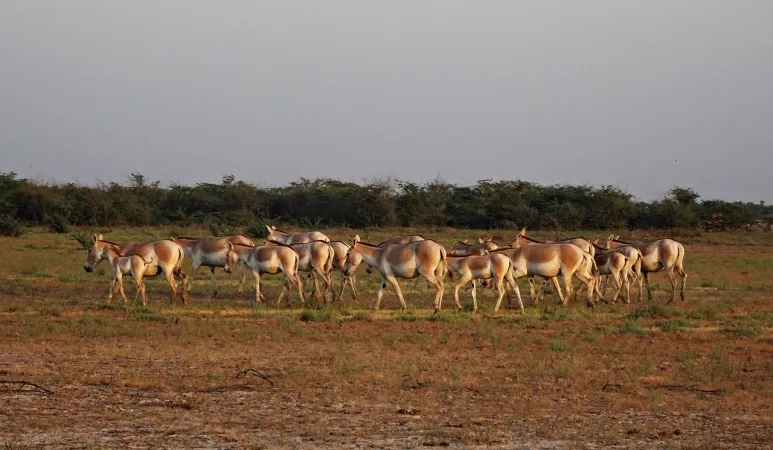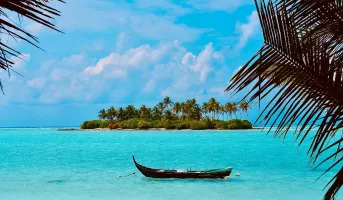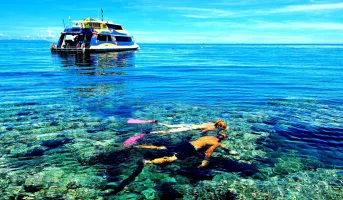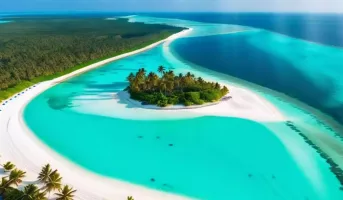Indian Wild Ass Sanctuary Travel Guide
The Indian Wild Ass Sanctuary, located in the Little Rann of Kutch in Gujarat, India, is a unique destination known for its diverse wildlife and stunning landscapes. Established in 1972, the sanctuary is home to the last population of the endangered Indian Wild Ass, also known as the Khur. The region's salt marshes, grasslands, and desert plains create a unique ecosystem that supports a variety of flora and fauna.
Top Attractions in Indian Wild Ass Sanctuary
- Witnessing the Indian Wild Ass in its natural habitat
- Exploring the vast salt marshes of the Little Rann of Kutch
- Birdwatching at the sanctuary, home to over 300 bird species
- Visiting nearby villages to experience local culture and handicrafts
- Taking a safari to spot other wildlife like desert foxes and nilgai
Indian Wild Ass Sanctuary is Famous for
Indian Wild Ass Sanctuary is most famous for being the last refuge of the endangered Indian Wild Ass, a unique species found only in this region.
Top Attractions in Indian Wild Ass Sanctuary
- Spotting the Indian Wild Ass in its natural habitat
- Exploring the vast salt flats of the Little Rann of Kutch
- Birdwatching at the sanctuary, a paradise for bird lovers
- Visiting local villages to experience traditional Gujarati culture
- Taking a safari to encounter diverse wildlife species
What's Great about Travelling to Indian Wild Ass Sanctuary?
- Perfect destination for wildlife enthusiasts
- Unique ecosystem with diverse flora and fauna
- Opportunity to see the endangered Indian Wild Ass up close
- Rich cultural experiences in nearby villages
- Great photography opportunities in the scenic landscape
What's Not So Great about Travelling to Indian Wild Ass Sanctuary?
- Limited accommodation options within the sanctuary
- Extreme temperatures during summers can be challenging
- Remote location might not be suitable for all travelers
- Limited dining options, especially for international cuisines
- Mobile network coverage can be patchy in some areas
Travel Tips for Indian Wild Ass Sanctuary
- Obtain necessary permits and permissions before entering the sanctuary
- Wear comfortable clothing and sturdy footwear for safaris
- Carry sufficient water and snacks during excursions
- Respect wildlife and maintain a safe distance during sightings
- Follow designated trails and instructions given by guides
Important Indian Wild Ass Sanctuary trip information
- Ideal Duration: 2-3 days
- Best Time to Visit: November to February
- Nearby Airports and Railway Stations: Ahmedabad Airport and Ahmedabad Railway Station
Per Person
27,980
*EXCLUDING APPLICABLE TAXES 4.9 Ratings
( 185 Reviews )
( 185 Reviews )
Per Person
27,980
*EXCLUDING APPLICABLE TAXES 4.9 Ratings
( 185 Reviews )
( 185 Reviews )
Per Person
27,990
*EXCLUDING APPLICABLE TAXES 4.9 Ratings
( 185 Reviews )
( 185 Reviews )
Per Person
27,980
*EXCLUDING APPLICABLE TAXES 4.9 Ratings
( 185 Reviews )
( 185 Reviews )
Per Person
27,990
*EXCLUDING APPLICABLE TAXES 4.9 Ratings
( 185 Reviews )
( 185 Reviews )
FAQ's on Indian Wild Ass Sanctuary
Q1: What is the best time to visit Indian Wild Ass Sanctuary?
The best time to visit the Indian Wild Ass Sanctuary is during the winter months from November to February when the weather is pleasant and cool. This period also coincides with the peak wildlife viewing season as the wildlife congregates around water sources. Avoid visiting during the summer months as temperatures can soar, making it uncomfortable for both wildlife and visitors.
Q2: Do I need a visa to travel to Indian Wild Ass Sanctuary?
Tourists visiting the Indian Wild Ass Sanctuary do not require a visa specifically for the sanctuary itself. However, if you are an international traveler, you will need a valid Indian tourist visa to enter the country. Make sure to check the visa requirements based on your nationality and travel plans.
Q3: What are the must-visit attractions in Indian Wild Ass Sanctuary?
The top attractions in the Indian Wild Ass Sanctuary include the endangered Indian Wild Ass, which is the main highlight of the sanctuary. Visitors can also enjoy birdwatching as the sanctuary is home to a variety of bird species. Other must-visit places include the Rann of Kutch, where you can witness the vast salt marshes and unique landscape.
Q4: Is Indian Wild Ass Sanctuary a safe place to travel?
Indian Wild Ass Sanctuary is generally a safe place for travelers. However, it is essential to follow the guidelines provided by the park authorities and avoid straying off designated paths. Be cautious of wild animals and maintain a safe distance. It is also recommended to visit with a guide for a more secure experience.
Q5: What is the local currency in Indian Wild Ass Sanctuary and can I use credit cards?
The local currency in India is the Indian Rupee (INR). While credit cards are accepted in larger establishments like hotels and some restaurants, it is advisable to carry cash for smaller vendors and local markets. ATMs are also available in nearby towns for convenient cash withdrawals.
Q6: What is the local cuisine like in Indian Wild Ass Sanctuary?
The local cuisine in the region surrounding the Indian Wild Ass Sanctuary is a mix of traditional Gujarati cuisine and flavors influenced by the Kutch region. Popular dishes include dhokla, thepla, khandvi, and various types of chutneys. Vegetarian food is predominant in this area, and travelers with dietary restrictions can find options like fresh fruits and salads easily.
Q7: What transportation options are available in Indian Wild Ass Sanctuary?
Transportation options in and around the Indian Wild Ass Sanctuary include taxis, rental cars, and guided tours. Public transport may be limited, so it is recommended to arrange for private transportation for convenience. Hiring a local guide or joining a safari tour is a popular way to explore the sanctuary and its surroundings.
Q8: Are there any cultural norms or etiquette I should be aware of when visiting Indian Wild Ass Sanctuary?
When visiting the Indian Wild Ass Sanctuary, it is essential to respect the local culture and customs. Dress modestly, especially when visiting religious sites or interacting with locals. Always ask for permission before taking photographs, especially of people. It is customary to remove your shoes before entering temples or homes. Also, avoid public displays of affection, as it may be considered inappropriate in certain areas. Embracing the local customs will enhance your travel experience and show respect for the community.
Q9: I am a travel agent. How can I buy travel leads of Indian Wild Ass Sanctuary?
Register yourself as a travel agent at agents.tripclap.com and then you can buy travel leads to Indian Wild Ass Sanctuary once your account is approved. For more details contact our support team at +91-8069186564 or support@tripclap.com






